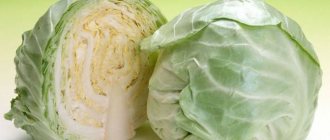Sesame oil is one of the most ancient, it is mentioned in the remaining written monuments of Ancient Egypt, it was used by the peoples who inhabited India and China, Japan and other countries of the East.
The oil extract of this plant was and is used by healers to treat a variety of diseases: the ancient Indian treatise “Ayurveda” mentions sesame oil as one of the most valuable components of a healthy person’s food. Women, both in ancient times and today, use the wealth of this natural product to preserve beauty and youth.
The second name for sesame is sesame. And under this name it was included not only in ancient medical manuscripts, but also in fairy tales. Everyone remembers from childhood how Ali Baba opened a cave full of treasures with the cherished words: “Sesame, open!” Everyone knows the fairy tale, but the true meaning of sesame was revealed to us not so long ago.
general description
Even the ancients noticed that sesame extract can be stored in clay vessels for about 9 years and not lose its taste and other qualities. For the hot southern climate, the shelf life of food is generally a very sensitive point, so products that have stood the test of time and survived the competition are worthy of close attention. By the way, the seeds from which the butter is extracted are stored for only one year, after which they become hopelessly rancid and become inedible.
Now a little about what sesame oil is from a scientific point of view. The chemical composition of the product is surrounded by legends and myths; some sources manage to find calcium and other macro- and microelements in it. In fact, there is nothing even close to that.
When considering sesame oil, its benefits and harms, and how to take it, first of all you need to understand that it is only fat. Vegetable, but this does not make it less caloric. There are no proteins, no minerals, even only one vitamin - E, and even that is not that much. And those who suggest replenishing calcium reserves with the help of this product simply do not see the difference between the squeezed seeds and finely ground seeds into a paste. The latter contains both proteins and carbohydrates. And the benefits of sesame oil for the body are due only to fatty acids and thereby vitamin E.
There are several types of oils, depending on the method of extraction and pre-treatment of sesame seeds. Cold-pressed sesame oil is the most valuable, it has a pronounced appetizing seed smell and a bright taste. It is used for daily oral administration and as a seasoning for cold dishes. Salad with sesame oil is a very high-calorie and at the same time vitamin-rich dish, and the oil squeeze promotes the best absorption of vitamins in the gastrointestinal tract.
If there is unrefined sesame oil, there must also be refined one. After cleaning, the raw material becomes significantly lighter, the smell becomes weaker, but it is still noticeable: it is a sweet nutty aroma.
There is also dark sesame oil, or black. It is extracted from roasted seeds, and it differs in taste from the light, so-called cheese-pressed one. It is believed that the dark extract has special properties and is the most healing.
There are many ways to use sesame oil: it is cooked with it, added to food and simply taken orally. External use – rubbing the skin for cosmetic purposes, lubricating wounds and burns, microtraumas. For medicinal purposes, it can be taken every day, but in strictly dosed quantities. The daily norm is calculated for each person individually, at the rate of 1 g per 1 kg of body weight. But it is not recommended to consume more than three tablespoons per day.
You cannot drink sesame oil and consume large amounts of fat at the same time: during such treatment, animal fats in the diet should be reduced to the required minimum.
Sesame oil: how to store, how to choose the right product?
First of all, when purchasing a product in a store, market or supermarket, you should pay attention to the production date and expiration date. It can be long-term (5-9 years), the product must be stored in a closed glass bottle in a dark and cool room. Only under such conditions can all the medicinal and cosmetic properties of the drug be preserved over the course of these years. Once the package is opened, the shelf life is reduced to six months if stored in the refrigerator.
Before choosing sesame oil, you need to understand for what purpose it will be used. The beneficial properties of the product, as well as its scope of application, depend on the variety. The oil product can be organic, cold-pressed, light and dark, refined and purified. Experts recommend giving preference to unrefined, cold-pressed sesame oil, especially if you plan to use it for medicinal purposes.
Beneficial features
It is even recognized by official medicine that sesame oil extract:
- accelerates metabolism and thereby slows down the aging process of cells;
- eliminates cholesterol plaques on the walls of blood vessels, increases their elasticity;
- helps normalize blood pressure;
- is an effective local anesthetic and warming (vasodilator) agent - oil is used for joints for rheumatic, arthritic and arthrosis pain;
- has a bactericidal effect: it is recommended to instill oil into the nose during a runny nose for those who are allergic to nasal drops and sprays;
- good for the liver, pancreas and intestines, improves the flow of bile;
- can be used as a laxative: sesame oil for constipation is taken in the morning, a teaspoon on an empty stomach, until the stool returns to normal.
For inflammatory processes in the oral cavity, it is recommended to rinse your mouth with a small amount of sesame oil extract. Sesame oil for thrombocytopenia (decreased platelet count) is indicated to increase blood viscosity.
You can use sesame oil during pregnancy, as it promotes a general improvement in the condition, accelerates the removal of waste and toxins, which prevents toxicosis in pregnant women.
In folk medicine, this remedy is taken to lower blood glucose levels. It helps with pulmonary diseases, such as acute respiratory infections of the upper respiratory tract, bronchitis, and pneumonia.
For toothache, sesame extract is applied to the gums near the painful tooth. This lubrication also helps with bleeding gums.
For women, this remedy is useful during menopause: it restores hormonal balance, eliminates hot flashes and sweating.
LiveInternetLiveInternet
The seeds of the sesame plant, cultivated since ancient times (more than 7000 years ago) to this day in India, Pakistan, Central Asia, China, and Mediterranean countries, have long been used not only as a culinary seasoning, but also as a raw material for the production of the famous medicinal and cosmetic properties of sesame oil (for example, references to the healing power of sesame seeds are found in the medical tracts of Avicenna, and in ancient Egypt, sesame oil was already widely used in folk medicine in 1500 BC). Another name for sesame is “sesame”, which translated from the Assyrian language means “oil plant” (the content of valuable sesame oil in sesame seeds reaches 60%).
Sesame oil, which has a lot of useful properties, is currently widely used in folk medicine and home cosmetology, used in pharmaceutical and baking production, confectionery, canning and perfume industries, in the production of solid edible fats and lubricants.
Composition of sesame oil
Having a high nutritional value and a host of beneficial properties, sesame oil is optimally balanced in terms of the content of essential amino acids, polyunsaturated fatty acids, vitamins (E, A, D, B1, B2, B3, C) necessary for the human body, macro- and microelements (potassium, calcium, phosphorus, zinc, magnesium, manganese, silicon, iron, copper, nickel, etc.), and other valuable biological active substances (antioxidants sesamol and squalene, phytin, phytosterols, phospholipids, etc.).
The composition of sesame oil contains beneficial fatty acids in almost equal proportions - polyunsaturated linoleic acid (Omega-6) (40-46%) and monounsaturated oleic acid (Omega-9) (38-42%) (content of linolenic acid Omega-3 acids in sesame oil oil is insignificant - 0.2%). The Omega-6 and Omega-9 fatty acid complex contained in sesame oil helps improve the functioning of the cardiovascular, reproductive, endocrine and nervous systems, normalize fat metabolism and blood sugar levels, strengthen the immune system, reduce the risk of developing cancer, and also neutralize negative impact on the human body of various types of harmful substances (slags, toxins, carcinogens, radionuclides, salts of heavy metals).
Sesame oil is rich in antioxidant vitamins E, A and C, which have a beneficial effect on the cardiovascular system, have a powerful immunostimulating effect, and also have anti-inflammatory and wound-healing properties. In combination with the B vitamins included in sesame oil, vitamins E, A and C help improve the functions of the visual apparatus, and also have a very beneficial effect on the condition of the skin, nails and hair (in this regard, sesame oil, saturated with “youth” vitamins E , A and C have been widely and variably used in cosmetology for many centuries).
Sesame oil is also an excellent source of macro- and microelements necessary for the human body. In terms of the content of calcium necessary for the full development of bone and cartilage tissue, sesame oil is a record holder among most food products (just 1 teaspoon of sesame oil can satisfy the body’s daily need for this macronutrient) . The concentration of potassium, phosphorus, magnesium, manganese, zinc, and iron in sesame oil is also high.
Sesame oil, like other edible vegetable oils, contains phytosterols (beneficially affecting the immune system, skin condition, endocrine and reproductive system functions) and phospholipids (necessary for the proper functioning of the liver, brain, cardiovascular and nervous systems, and also for better absorption of vitamins A and E by the body).
Sesame oil, in addition, contains the powerful antioxidant squalene, which is necessary for the full synthesis of sex hormones, helps reduce cholesterol levels in the blood and strengthens the immune system, and has pronounced bactericidal and antifungal properties. (detailed information about the beneficial properties of squalene is given in the article “Amaranth Oil”).
Use of sesame oil in cooking
Sesame oil is obtained from sesame seeds by cold pressing. Unrefined oil made from toasted sesame seeds has a distinctive dark brown hue, a rich, sweet, nutty flavor and a strong aroma (in contrast to the light yellow sesame oil made from raw sesame seeds, which has a less pronounced taste and odor).
Fragrant, rich in nutrients, unrefined sesame oil has long been widely used as a traditional ingredient in Indian, Japanese, Korean, Chinese and Thai cuisine (it is worth noting that before the advent of peanut oil, it was sesame seed oil that was most often used in India for cooking ). In exotic Asian cooking, sesame oil, especially well combined with honey and soy sauce, is most often used in preparing pilaf, seafood dishes, deep-frying and oriental sweets, marinating meat and vegetables, dressing meat and vegetable salads.
Just a few drops of sesame oil can add an original taste and unique aroma to a variety of Russian cuisine - soups, hot meat and fish dishes, mashed potatoes, porridges, cereal side dishes, gravies, pancakes, pancakes, homemade baked goods. For those who find the aroma of unrefined sesame oil too intense, we recommend mixing it with peanut oil, which has a “softer” aroma, when using this product for culinary purposes.
Unlike other edible oils (camelina, mustard, avocado), unrefined sesame oil is not suitable for frying; it is recommended to add this plant product to hot dishes only before serving.
Having high nutritional and energy value and a high content of easily digestible fats and vegetable proteins, sesame oil can be successfully used as a component of dietary and vegetarian nutrition.
Due to the high content of natural antioxidants (and in particular sesamol), sesame oil is highly resistant to oxidation and has a long shelf life.
Beneficial properties of sesame oil and its use in the prevention and treatment of various diseases
Sesame oil, which has a wide range of therapeutic effects (anti-inflammatory, bactericidal, wound healing, analgesic, immunostimulating, anthelmintic, laxative, diuretic properties) has long been used in many countries around the world, not only as a valuable food product, but also as an effective traditional medicine. In particular, sesame oil is often mentioned in Ayurveda (the study of traditional methods of ancient Indian medicine) as “warming”, “hot and spicy”, “inhibiting mucus and wind”, “strengthening the body”, “removing poisons and toxins from the body” , a “heart nourishing” and “mind calming” natural remedy for many ailments.
Benefits of sesame oil for the digestive system.
Neutralizes the increased acidity of gastric juice, brings relief from intestinal colic, has an anti-inflammatory, bactericidal, laxative and anthelmintic effect, helping to eliminate erosive and ulcerative damage to the mucous membranes of the gastrointestinal tract (thanks to the “wound healing” vitamins A and E, squalene, phospholipids included in the composition ) sesame oil can be used in the prevention and complex treatment of constipation, gastritis with high acidity, gastroduodenitis, stomach and duodenal ulcers, colitis, enterocolitis, pancreatic diseases, helminthiases. Due to the high content of phospholipids and phytosterols, which stimulate the process of bile formation and bile secretion, restoring the normal structure of the liver, sesame oil can also be included in the diet for the prevention of cholelithiasis and used in the complex treatment of diseases such as fatty liver, biliary dyskinesia, hepatitis. In the section “Healing recipes based on sesame oil” you will learn about various ways to use sesame oil in the prevention and treatment of diseases of the digestive system.
Sesame oil – for the health of the heart and blood vessels.
Sesame oil contains a complex of substances that nourish and strengthen the heart muscle, increase the elasticity and strength of the walls of blood vessels, reduce the level of “bad” cholesterol in the blood, prevent the formation of cholesterol plaques in blood vessels, normalize blood pressure (among such substances are vitamin E, vitamin C, Omega-6 and Omega-9 acids, magnesium, potassium, manganese, iron, calcium, phytosterols, phospholipids, squalene, sesamin). In this regard, the introduction of sesame oil into the daily diet is an effective prevention and a useful component of complex treatment of diseases such as atherosclerosis, hypertension, coronary heart disease, arrhythmia, tachycardia, heart attack, stroke. Regular consumption of sesame oil, which helps increase platelet levels in the blood, is also especially useful for people suffering from diseases such as hemorrhagic diathesis, hemophilia, Werlhof's disease, essential thrombocytopenia, and thrombocytopenic purpura.
Sesame oil is a useful product for people with mental work.
Sesame oil is rich in substances necessary for the full functioning of the nervous system, and in particular, for normal and coordinated brain activity (such substances include phospholipids, essential amino acids, zinc, phosphorus, B vitamins). Therefore, this plant product, which has high nutritional and energy value, is useful for use in the daily diet during intense mental stress, frequent stress, memory impairment, and attention disorders. Regular consumption of sesame oil, rich in Omega-9 oleic acid, is an effective prevention of serious diseases such as multiple sclerosis and Alzheimer's disease.
Sedative and antidepressant properties of sesame oil.
Thanks to the high content of magnesium, B vitamins, polyunsaturated acids and the antioxidant sesamolin, sesame oil perfectly calms the nervous system, protecting it from the negative effects of psycho-emotional stress. Regular consumption of sesame oil helps eliminate insomnia, apathy, depression, increased irritability and fatigue. A massage using sesame oil promotes pleasant relaxation of tense muscles of the face and body.
The benefits of sesame oil for women's health.
Sesame oil is optimally balanced in terms of the content of substances that have a beneficial effect on the functions of the endocrine and female reproductive system (among them - Omega-6 and Omega-9 acids, phytosterols with estrogen-like effects, vitamin E, squalene, zinc, B vitamins, phospholipids). Therefore, regular consumption of sesame oil can bring tangible benefits to women experiencing physiological and psycho-emotional discomfort during the premenstrual or menopausal period. And in addition, sesame oil, rich in vitamin E, necessary for proper embryonic development and full lactation, can rightfully take its rightful place in the daily diet of a pregnant or lactating woman.
The introduction of sesame oil into the daily diet will also bring tangible benefits for:
Diabetes and obesity (sesame oil, which contains a number of substances involved in the synthesis of insulin by the pancreas (sesamin, manganese, magnesium, zinc, Omega-9 oleic acid, etc.), normalizes metabolism, promoting the effective “burning” of fat deposits due to excess weight).
Diseases of bones, joints, teeth (having bactericidal and anti-inflammatory properties, rich in calcium, silicon, phosphorus, magnesium, vitamin C, necessary for the proper development, functioning and restoration of cartilage, bone and dental tissue, sesame oil can be successfully used in the prevention and complex treatment of various injuries of the musculoskeletal system, osteoporosis, osteochondrosis, gout, arthritis, arthrosis, rheumatoid arthritis, caries, periodontal disease, periodontitis).
Anemia (sesame oil prevents the development of anemia, because it is rich in substances involved in the process of hematopoiesis - iron, manganese, magnesium, copper, zinc, phospholipids,)
Respiratory diseases (sesame oil is an effective traditional medicine for eliminating dryness of the nasal mucosa, as well as complex treatment of ENT diseases, pneumonia, bronchial asthma, dry cough).
Diseases of the urinary system (sesame oil, which has a bactericidal, anti-inflammatory and diuretic effect, is very useful to include in the diet for diseases such as urolithiasis, nephritis, pyelonephritis, cystitis, urethritis).
Diseases of the visual organs (sesame oil contains a high content of vitamins A and C, B vitamins, zinc, calcium, magnesium, manganese - substances that help improve the functioning of the visual organs.
Diseases of the male reproductive system (sesame oil contains a complex of substances (vitamin E, vitamin A, zinc, magnesium, squalene, phytosterols) that improve erection, the process of spermatogenesis and have a beneficial effect on the functioning of the prostate gland).
Regular consumption of sesame oil, which has powerful antioxidant and immunostimulating properties (thanks to its constituent vitamins E, A, C, squalene, sesamol, phospholipids, Omega-6 and Omega-9 acids) is an excellent prevention of various cancer diseases.
Sesame oil can also be successfully used as an integral component of sports nutrition (this herbal product, which helps build muscle mass, is often used by bodybuilders in their daily diet).
The use of sesame oil in cosmetology and dermatology
Having bactericidal, wound-healing, anti-inflammatory, antifungal, immunostimulating properties that help improve the condition of the skin, sesame oil is a widely used folk medicine for the complex treatment of various dermatological diseases and skin damage (wounds, burns, eczema, psoriasis, mycoses, etc. ).
Rich in substances that have a beneficial effect on the condition of the skin, hair and nails (“youth vitamins” A, E and C, B vitamins, Omega-6 and Omega-9 acids, phytosterols, phospholipids, squalene, silicon, magnesium, phosphorus, calcium , zinc), sesame oil has a very wide range of cosmetic effects. Namely:
Penetrating deeply into the skin, sesame oil promotes active nutrition, moisturizing and softening (vitamin E contained in this oil perfectly moisturizes the skin, and squalene, which is part of sesame oil, stimulates oxygen exchange and blood circulation in the skin)
Biochemical components of sesame oil that promote natural collagen synthesis (proteins, silicon, vitamin C) give the skin firmness and elasticity.
Sesame oil helps maintain normal water-lipid balance of the skin and restore the protective functions of the epidermis
Sesame oil perfectly cleanses the skin surface of dead cells, dirt and various harmful substances and promotes rapid regeneration of the skin.
Possessing anti-inflammatory and bactericidal properties, being an excellent source of zinc necessary for the skin, sesame oil is especially useful for acne, as well as various skin irritations accompanied by redness, peeling or inflammation.
Sesame oil, rich in antioxidants, prevents premature skin aging, incl. associated with excessive exposure to sunlight or hormonal disorders (sesame oil contains the antioxidant sesamol, which intensively absorbs ultraviolet radiation, as well as substances that help normalize hormonal balance - phytosterols, phospholipids, Omega-6 and Omega-9 acids, vitamin E, vitamins group B, zinc).
Thanks to the properties described above, sesame oil is widely used in home cosmetology as:
Base oil for the preparation of various creams, balms, lotions, masks for the care of aging, dry, flaky and sensitive skin of the face, hands and neck, lip balms, moisturizing creams for the skin of the eyelids
An integral component of all kinds of cosmetics intended for the care of oily skin (sesame oil helps normalize the functioning of the sebaceous glands)
Ingredients in various sunscreen cosmetics (cosmetics “for tanning” and “after tanning”)
Base oil for aromatherapy (sesame oil combines most successfully with essential oils of myrrh, lemon, bergamot, geranium, frankincense, etc.)
Massage oils (rich in “anti-stress” magnesium, excellent for relaxing facial muscles, sesame oil is an effective means for a relaxing massage)
Stabilizing antioxidant for other base oils (due to its high resistance to oxidation, sesame oil is often used in a mixture with rapidly oxidizing oils. For example, almond oil increases its stability to oxidation in the presence of sesame oil by 28%)
Products for the care of delicate, sensitive baby skin
Skin cleansers and makeup removers
Nail care products (external use of sesame oil in the form of cosmetic baths helps to enhance nail growth and prevent their fragility and delamination; in addition, due to its antifungal properties, sesame oil is often used in the complex treatment of nail fungus)
Hair care products (rich in silicon, vitamins E and group B, essential for hair health, sesame oil is a very effective remedy for brittle hair and hair loss, as well as an excellent nourishing and restorative component in masks for damaged or colored hair. Sesame oil normalizes the functioning of the sebaceous glands the oil is also useful for use in the complex treatment of seborrhea)
For adults, sesame oil is recommended to be consumed in its pure form (1 teaspoon 2-3 times a day with meals), or used in salad dressings or in the preparation of various culinary dishes.
Medicinal use:
For children, the daily dose of sesame oil should be:
At the age of 1 to 3 years – 3-5 drops;
At the age of 3 to 6 years – 5-10 drops;
From 10 to 14 years old – 1 teaspoon.
When treating hemorrhagic diathesis, poor blood clotting, essential thrombopenia, Werlhof's disease, sesame oil should be taken 1 tbsp. spoon 3 times a day before meals.
To prevent caries and strengthen the gums, you should keep 0.5 tbsp in your mouth for 10 minutes every day. spoons of sesame oil. After this procedure, it is recommended to rinse your mouth with lightly salted water.
Rubbing sesame oil into the gum near the sore tooth will help relieve or reduce toothache.
For colds, it is recommended to put 3-4 drops of sesame oil into the nose several times during the day, and also rub warm sesame oil (temperature 36-38 degrees) into the chest area and into the soles of the feet in the evening before bed. This external use of sesame oil should be combined with its daily oral administration (0.5 tablespoon 3 times a day or 1 tablespoon in the morning).
For a wet cough, it is useful to rub your back and chest with salt and sesame (or mustard) oil until reddened 2 times a day.
To treat ulcerative colitis or gastritis with high acidity, you should take sesame oil 0.5-1 tbsp. spoon 2-3 times a day before meals.
For constipation, it is useful to take 1 tbsp once a day. a spoonful of sesame oil (for severe chronic constipation, the dose should be increased - up to 1 tablespoon 2 times a day)
For intestinal colic, sesame oil is rubbed into the abdominal area with massage movements until completely absorbed, and 20-30 g of sesame oil is taken in the morning before breakfast.
For inflammatory diseases of the skin and mucous membranes, you should lubricate the sore spot with sesame oil 2-3 times a day, and also take 0.5-1 teaspoon of sesame oil orally before meals.
For itchy dermatitis and skin irritations, you should wipe the sore spot with a mixture prepared as follows: mix equal parts juice from aloe leaves and freshly squeezed grape juice, then add one part of sesame oil to one part of the resulting mixture. To enhance the therapeutic effect, the mixture prepared according to this recipe is also taken orally, 1 tbsp. spoon 2-3 times a day.
Massaging your feet with warm sesame oil, followed by immersing your feet in a warm bath with the addition of herbs and spices that have a warming effect, will help relieve fatigue and heaviness in your legs.
Taking 1 tbsp daily will help replenish calcium deficiency in the body. spoons of sesame oil.
To improve sleep, you should rub sesame oil into your scalp, soles of your feet, and big toes at night.
For mastitis, it is useful to apply gauze folded in several layers, soaked in sesame oil, to the breast.
To ease breathing during bronchial asthma, taking 1 tbsp orally once a day will help. spoons of sesame oil.
Body massage with sesame oil perfectly relaxes tense muscles and also helps cleanse the body of toxins.
Cosmetic recipes based on sesame oil
Nourishing and hair mask
Rub sesame oil into your scalp with massaging movements. Wash off the oil after 30 minutes with warm water and shampoo. This procedure, carried out 1-2 times a week, will preserve the beauty and health of your hair for a long time.
Moisturizing and nourishing mask for face and décolleté
Apply sesame oil with light movements to the face and décolleté. After 30 minutes, blot off excess oil with a napkin. This mask, which tightens pores, relieves inflammation and irritation, is useful for oily, dry, flaky and aging skin.
Massage to strengthen nails
Dip your fingertips in warm water with lemon juice for 8-10 minutes. Then wipe your fingers dry and massage the tip of each finger for 6-7 minutes, using sesame oil during massage.
Mask to reduce facial puffiness
Mix 1 teaspoon of sesame oil and 1-2 drops of essential oil (pine, juniper or tangerine). Apply a small amount of the resulting mixture to the tips of your fingers and rub into the skin of your face with light massaging movements.
Sesame oil for cleansing facial skin
Soak a cosmetic cotton swab in warm water, squeeze it out, apply a few drops of sesame oil and wipe your face with it.
Contraindications to the use of sesame oil
Individual intolerance to sesame oil. People suffering from increased blood clotting, a tendency to blood clots, and varicose veins should consult a doctor before consuming sesame oil.
Storage period and conditions
Shelf life: 2 years
Storage conditions: Store in a dark and cool place. After the first use, sesame oil should be stored in the refrigerator in a tightly closed bottle.
Series of messages "Vegetable oils":
Part 1 - Vegetable oils Part 2 - Avocado oil ... Part 14 - Wheat germ oil Part 15 - Corn oil Part 16 - Sesame oil Part 17 - Pine nut oil (Pine nut oil) Part 18 - Cocoa butter ... Part 36 - Cottonseed oil Part 37 - Black cumin oil Part 38 - Rosehip oil
Calorie content
Sesame oil is very high in calories: 884 kcal per 100 grams. This must be taken into account, because often in the pursuit of benefits, many forget about a sense of proportion. One spoon per day is enough, which must be divided into two parts - one taken orally, the other added to food. The amount of other animal and vegetable fats taken should be reduced.
General description and composition of sesame oil
Sesame oil is obtained from the seeds of the Sesamum indicum, or sesame, plant. There are three types:
- cold pressed - unrefined, has a distinct sesame scent;
- heat-treated - refined, distinguished by a light nutty aroma;
- from roasted sesame - dark color, strong smell.
White sesame seed oil has a slight odor and yellow color. A dark-colored liquid is obtained from black sesame seeds; it contains more vitamins and microelements. A well-known supplier of black sesame oil is Austria.
The product contains polyunsaturated fatty acids that are beneficial for the human body - stearic, palmitic, linoleic. He contains:
- B vitamins;
- ascorbic acid;
- fat-soluble vitamins A and E;
- copper, calcium, potassium, iron - in larger quantities;
- manganese, zinc, phosphorus, magnesium - in smaller quantities.
The calorie content of 100 ml of oil is 884 kcal. Nutritional value: 99.8 grams of fat per 100 ml.
See a general overview of the history of the oil and its benefits:
Contraindications
Sesame oil is not equally beneficial for everyone. Contraindications relate primarily to:
- people with increased blood clotting;
- with thrombophlebitis;
- allergy sufferers.
The latter also include those who have an individual intolerance to sesame. Sesame oil is not recommended for varicose veins.
The harm of sesame oil to the body often depends on the quantities in which it is consumed and what types of food preparation it is used for. It is best not to heat this product, because when exposed to heat, especially for a long time, it loses all its benefits and becomes carcinogenic.
The benefits and harms of black sesame oil depend on how and in what quantity you take it. If diarrhea and skin rashes begin, you need to definitely reduce the daily dose, or it is better to take a break from this product altogether for a while.
Indications for use
No product should be used uncontrolled. After all, if you overdo it, you can do harm. In addition, sesame oil is allergenic, so before making masks, make sure that you do not have this disease.
Symptoms that indicate it's time to use sesame oil:
Signs of aging appear: dry skin, the first expression lines, deteriorating elasticity. Unhealthy complexion. This symptom may indicate other health problems, but first of all it is necessary to carry out a series of skin care procedures. Unevenness in color, redness, peeling and irritation appear. Avitaminosis.
Use in cooking
Sesame oil is as essential in Asian cooking as sunflower oil is in our native cuisine. It is used for deep-frying and savory snacks, added to sweets and marinades for vegetables, and used to cook meat and fish. A real oriental salad is seasoned with a mixture of soy sauce, sesame oil and honey. The list of dishes where this product is added in the East is endless.
The so-called warm salads with sesame squeeze are very useful. To make an assorted vegetable salad, you need to take 200 g of eggplant, zucchini, tomatoes, young carrots, sweet peppers, and bake them on the grill or in the oven. The finished vegetables are peeled, if necessary, cut into circles and placed in a large dish. Top with spicy dressing.
How to make sesame oil for salad dressing: finely chop a clove of garlic and a little sweet salad onion, mix with 2 tbsp. l. sesame extract, add a small pod of red hot pepper cut into rings, and a little fresh cilantro. All this is mixed and seasoned in vegetable, meat and fish salads and other dishes. If you add soy sauce to the dressing, you don’t need to salt it afterwards.
What to replace sesame oil with - everyone chooses for themselves. It is best to take nut extract (walnuts and others), it has a similar taste. For those who find the smell and taste of sesame extract too intense, chefs recommend making mixtures: adding other oil extracts. Peanuts “sound” most harmoniously; they complement the nutty aroma of sesame, but are milder in taste.
The question of which oil is healthier, flaxseed or sesame, cannot be answered unambiguously. Objectively, the difference between them is that flaxseed has more beneficial properties, but it is stored less and has significant contraindications. Even children can use sesame oil extract in small quantities.
Face mask recipes
The recipe is suitable for both facial skin and hair. The mask nourishes, moisturizes, gives energy and freshness. Ingredients: teaspoon lemon juice, 1.5 tsp. dried ginger, 3 tbsp. l. sesame oil. All ingredients are mixed and left to brew for 10 hours. Wipe your face with a cotton pad daily. Store this infusion in the refrigerator in a dark glass container. Won't go bad within a few weeks. The mask must be washed off after 15-25 minutes. Lubricate the skin with nourishing cream afterwards. A universal mask for all occasions consists of sesame oil and cocoa powder in equal proportions. The result will be a thick brown mass with a chocolate smell. It is also applied to problem areas of the body, wrapped in plastic film. On the face - for 30-60 minutes, on the body - 30-90 minutes. Such a mask will not cause harm, it will only have a positive effect on the condition of the skin and reduce stretch marks.
For rejuvenation, combine sesame oil and cocoa butter. Since it has a solid structure, it must first be melted in a water bath. Apply the mask for 20 minutes. It will smooth out small wrinkles and tighten the oval of the face. The skin around the eyes is the most delicate on the face, so it should be moisturized first. The following mask has been invented for it: a tablespoon of sesame oil is combined with 4 capsules of vitamin A and E. They are sold in pharmacies. Apply with fingertips to eyelids at night. To restore skin with pronounced wrinkles, dryness, dullness, and poor complexion, a mask made from a mixture of sesame and rosehip oil in equal proportions is recommended. Rosehip is rich in vitamin C, it will give energy, tone, and increase the protective properties of the skin. Apply the mask for 20 minutes. Afterwards, remove the excess with a napkin or paper towel. There is no need to apply additional moisturizer. Use once a week for prevention, and for treatment up to 3 times a week until visible results.
In order to be beautiful, you do not need to put in a lot of money and effort, it is important to follow the recommendations and implement them regularly, then the result will not be long in coming. Very soon you will see in the mirror not just a beautiful girl, but a real goddess!
Use in cosmetology
Sesame oil for women is not only a culinary, but also a cosmetic raw material. It is added to masks and scrubs, homemade creams. This product promotes gentle exfoliation of dead particles of the epidermis, rejuvenating and moisturizing the skin.
It is also used for tanning: sesame extract serves as a kind of filter for solar ultraviolet radiation, so the tan is even, and the risk of getting a sunburn is reduced if you treat the skin with this product.
Massage masters often use sesame oil on the body - it is very useful for massages and body wraps. Sesame oil has also been used in hair care: for a nourishing mask, it is mixed with egg yolks, fermented milk products, a small amount of honey or cognac, depending on the oiliness or dryness of the hair.
How to cook at home
To be sure that sesame oil is 100% natural, you can prepare it yourself. To do this, you need to buy high-quality sesame seeds and choose the appropriate recipe.
Recipe No. 1:
- Heat the seeds in a dry frying pan while stirring, avoiding burning.
- Grind the heated seeds in a blender or mortar.
- Wrap crushed sesame seeds in cheesecloth and pass through a garlic press.
- Repeat until sufficient sesame oil has been obtained.
Recipe No. 2:
- Stir-fry the seeds in a dry frying pan. Stronger than in the first recipe, but without allowing it to burn.
- Grind in a blender or mortar.
- Transfer the crushed sesame seeds to the frying pan. Pour in vegetable oil so that it slightly hides the seeds.
- Warm up for 5-7 minutes.
- Pour into a dark glass container, let it brew for 24 hours, strain.
Recipe No. 3:
- Heat the sesame seeds in a frying pan for 5 minutes, then pour in vegetable oil until it completely covers them.
- Set the heat to minimum and let stand for about an hour, stirring occasionally.
- Strain and pour into a darkened glass container.
What is the price
The lower price level for this product is 120 rubles per 100 ml. This is the cheapest refined product, which may also turn out to be a fake. Real black sesame seed oil can cost from 400 rubles for a small bottle. They buy high-quality pomace in specialized departments of grocery stores; you should not buy it on the Internet.
Interesting Facts
What did you use to dress salad in Harappa?
Archaeological evidence suggests that oil from sesame and other plants was already known in the Harappan civilization, which existed in India more than 3,000 years ago. During the excavations, objects were discovered that were parts of a press for squeezing out oil and vessels for storing it. It was a stone mortar with a mechanical pestle. The mechanism was driven by a harnessed bull. This successful design has not changed for centuries; similar devices and containers can be seen in India today. It is curious that the deep metal frying pans found are also practically no different from the frying pans that Indian housewives use today. They still pour sesame oil into them and prepare the same traditional dishes.
According to the covenant of the Mahatma
In the 30s of the last century, Mahatma Gandhi called on the people of India to restore village crafts that had fallen into decline, including the home production of sesame oil using ancient technology. In a short time, the number of small oilseed artels and cooperatives has increased to 500,000. In India, to this day there is a government commission that supports oilseed production in rural areas, there are government subsidies for them, and producers are exempt from taxes on the sale of their products.
Salad “Cucumbers with sesame seeds”
A salad with cucumbers sprinkled with sesame seeds is healthy and requires a minimum of ingredients. There are many options for preparing cucumber dressing. One of the options for salad with sesame seeds, the photo of which is presented below, requires the following products:
- fresh cucumbers - 3 or 4 pieces;
- sesame seeds - 1 tablespoon (or to taste);
- table salt - to taste;
- granulated sugar - 1 tablespoon (can be replaced with honey);
- sunflower oil - 1 teaspoon;
- soy sauce - 0.5 teaspoon;
- Rice vinegar - 2 tablespoons.
Wash the cucumbers thoroughly, cut into thin slices, put in a container, and add salt.
Mix rice vinegar, oil, granulated sugar (or honey) and soy sauce in a separate bowl. Mix everything well.
Fry sesame seeds in a dry frying pan until golden brown.
Lightly squeeze the chopped cucumbers, place in a salad bowl, season with the prepared mixture and sprinkle with sesame seeds. Delicious salad is ready to serve.
Coleslaw with corn and chicken breast
- Number of servings: 3
- Kcal: 210
- Chicken breast (boiled or baked) 250 g
- Cabbage 150 g
- Corn 100 g
- Carrots 150 g
- Yogurt 100 g
- Salt, garlic
- Olive oil
Chop the cabbage, grate the carrots, cut the chicken breast into cubes. Mix cabbage, chicken, carrots, and corn in a salad bowl. Separately mix yogurt, salt, garlic (mustard) and olive oil and season the salad.









